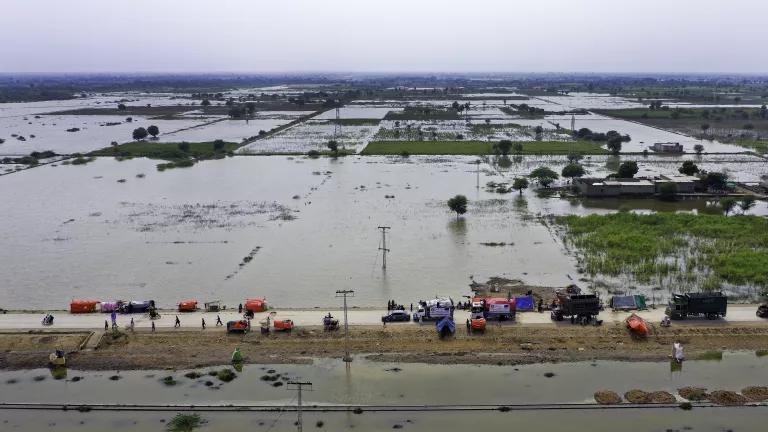American Workers Need Better Safeguards from Extreme Heat
All sorts of federal safeguards protect the health of American workers. There’s a requirement for employers to ensure construction workers wear the right protective gear. Tractors and other large farm equipment must be turned off before workers make repairs. Potentially flammable areas on ships need to be indicated by warning signs. However, there is no specific standard for working in dangerously hot environments—even though about 2 in 1,000 workers are at risk for heat-related illnesses. That’s why NRDC joined more than 130 labor, faith, health, and environmental groups today to urge the Occupational Safety and Health Administration (OSHA) to develop a federal heat standard to protect outdoor and indoor workers.
Extreme heat isn’t just an inconvenience—it can kill people. Exposure to extreme heat is hazardous for any person, but is particularly dangerous for people engaged in strenuous work. Research shows that two such groups, construction workers and farmworkers, account for most occupational heat-related deaths. Other workers are at risk, too. Delivery drivers who work without air conditioning (like the death of a California postal worker during a recent heat wave), factory workers who work indoors (like recent reports of warehouse workers in Pennsylvania sweltering in extreme heat conditions that OSHA ended up investigating), and firefighters that encounter extreme temperatures on duty. Yet there is no federal heat standard that could help to protect all of these types of workers.
This gap is compounded by climate change, which helps fuel longer, more frequent, and more intense heatwaves seen in U.S. cities in recent years. As a result of the increasing severity of heat waves, risks of heat-related illness and death will also grow. Beyond the health impacts, extreme heat exposures are also bad for business. One study estimated that, by 2050, increases in extreme heat under continued high levels of carbon pollution could lead to annual losses of 880 million hours labor and $44 billion in wages (compared to 2005).
Currently, American workers get some protection from heat under OSHA’s general duty clause. However, as Public Citizen’s petition today details, OSHA doesn’t inspect or cite employers for heat violations very often. To lend some context, from 2013 through 2017, California’s state OSHA performed 50 times more state inspections for unsafe heat—inspections in which there was one or more violation or citation concerning heat—than did federal OSHA.
Furthermore, employers don’t seem to be following best practices when it comes to heat safety. A study of 38 OSHA investigations involving 66 heat-related illnesses for 2011 to 2016 found that none of the employers involved had formal plans for heat acclimatization or enforced mandatory rest breaks. It also found that only 10 percent of employers could actually monitored the temperature of the worksites and just 36% of employers provided heat-safety training.
More and better standards and enforcement are needed, which is why today, NRDC has joined Public Citizen’s petition for OSHA to develop a federal heat exposure standard. Exposure to extreme heat, like climate change itself, is bad for our health and bad for business. To build healthier, more secure communities and a healthier workforce, the time for national worker heat protection is now.





